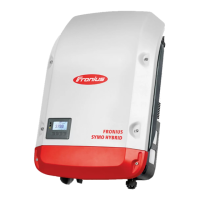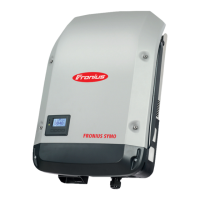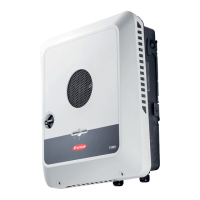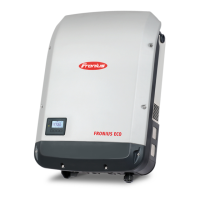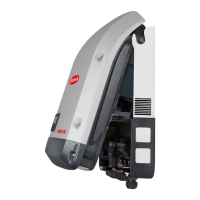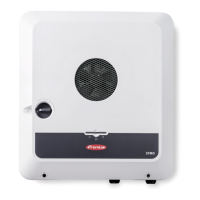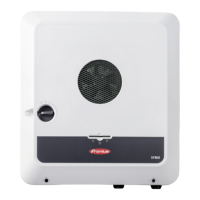Specifying a defined discharging power
A defined discharging power can be specified by setting the min. and max. discharging power to
the same value.
Discharging
limit
Discharge / charge
0 W
Charging limit
Min. / max.
discharging
3000 W
Possible applications
- Time-dependent electricity tariffs
- Battery reservation for market-specific power limitation
- Time-dependent capacity reservation for emergency power
PV power reduc-
tion
The battery control parameters make the generated energy as optimally usable as pos-
sible. However, situations may arise in which PV energy cannot be fully used due to bat-
tery control parameters.
Example
Fronius Symo Hybrid 3.0-S: 3000 W (max. output power)
Fronius Solar Battery 7.5
Defined discharge 3000 W
PV power 1000 W
In this case, the inverter would need to reduce the PV power to 0 W, as the output power
of the Fronius Symo Hybrid 3.0-S is max. 3,000 W and the device is already fully utilised
through the discharging.
Since it does not make sense to waste PV power, the power limitation for the battery
control parameters is automatically adjusted so that no PV power is wasted. In the above
example, this means that the battery is only discharged with 2,000 W, so that the 1,000
W of PV power can be used.
108
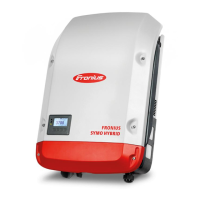
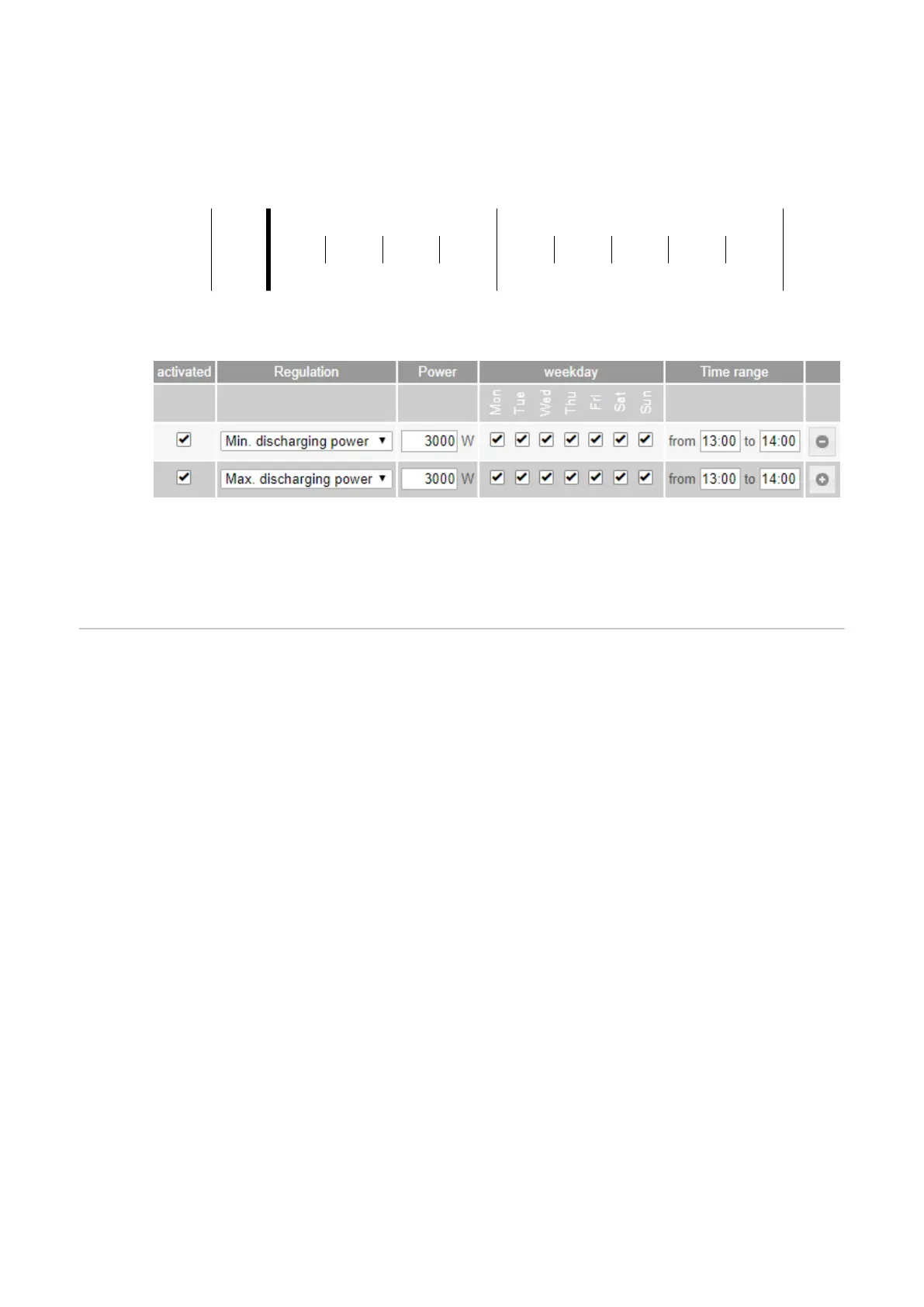